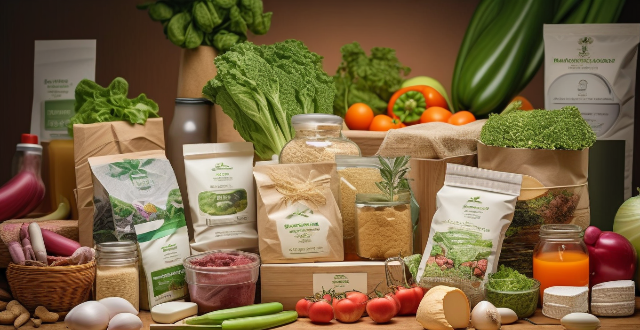Identifying truly organic products requires looking for certification labels, checking the ingredient list, researching the manufacturer or brand, and visiting farmers markets and local stores. Certification labels such as USDA Organic, Euro-leaf, and JAS indicate that the product meets specific standards for organic production. The ingredient list should indicate that all ingredients are organic and free from GMOs. Researching the manufacturer or brand can provide information about their farming practices and quality control processes. Visiting farmers markets and local stores allows you to ask questions about the products and see them firsthand. By following these tips, you can ensure that you are getting genuine organic products that are free from harmful chemicals and pesticides.

How to Identify Truly Organic Products
Identifying truly organic products can be a challenging task, especially with the increasing number of products claiming to be "organic" in the market. However, there are several ways to ensure that you are getting genuine organic products. Here are some tips:
1. Look for Certification Labels
One of the easiest ways to identify truly organic products is by looking for certification labels. In many countries, organic products are certified by government agencies or third-party organizations. These certifications ensure that the product meets specific standards for organic production.
Examples of Certification Labels:
- USDA Organic: This label is used in the United States and indicates that the product has been produced according to strict federal guidelines.
- Euro-leaf: This label is used in Europe and indicates that the product has been produced according to European Union organic regulations.
- JAS: This label is used in Japan and indicates that the product has been produced according to Japanese Agricultural Standards.
2. Check the Ingredient List
Another way to identify truly organic products is by checking the ingredient list. Organic products should contain only organic ingredients, which means they should not contain synthetic pesticides, fertilizers, or genetically modified organisms (GMOs).
What to Look For:
- Organic Ingredients: The ingredient list should indicate that all ingredients are organic. If an ingredient is not organic, it should be listed as "non-organic" or "conventional."
- Avoid GMOs: Organic products should not contain GMOs. Look for labels indicating that the product is non-GMO or GMO-free.
3. Research the Manufacturer or Brand
Researching the manufacturer or brand can also help you identify truly organic products. Look for information about their farming practices, sourcing methods, and quality control processes.
What to Look For:
- Transparency: A reputable brand should be transparent about its farming practices and sourcing methods. They should provide information about how they ensure their products are organic.
- Positive Reviews: Look for reviews from other customers or experts in the field. Positive reviews can indicate that the brand is producing high-quality organic products.
4. Visit Farmers Markets and Local Stores
Visiting farmers markets and local stores can also help you identify truly organic products. These venues often sell directly from local farmers and producers, allowing you to ask questions about their farming practices and see their products firsthand.
What to Look For:
- Local Farmers: Look for local farmers who are growing and selling their own produce. They may have more knowledge about their farming practices and can answer any questions you have about their products.
- Quality Products: When visiting farmers markets and local stores, look for fresh, high-quality products. These venues often have a wide variety of organic fruits, vegetables, and other foods that are free from harmful chemicals and pesticides.
In conclusion, identifying truly organic products requires careful consideration of various factors such as certification labels, ingredient lists, researching manufacturers or brands, and visiting farmers markets and local stores. By following these tips, you can ensure that you are getting genuine organic products that are free from harmful chemicals and pesticides.